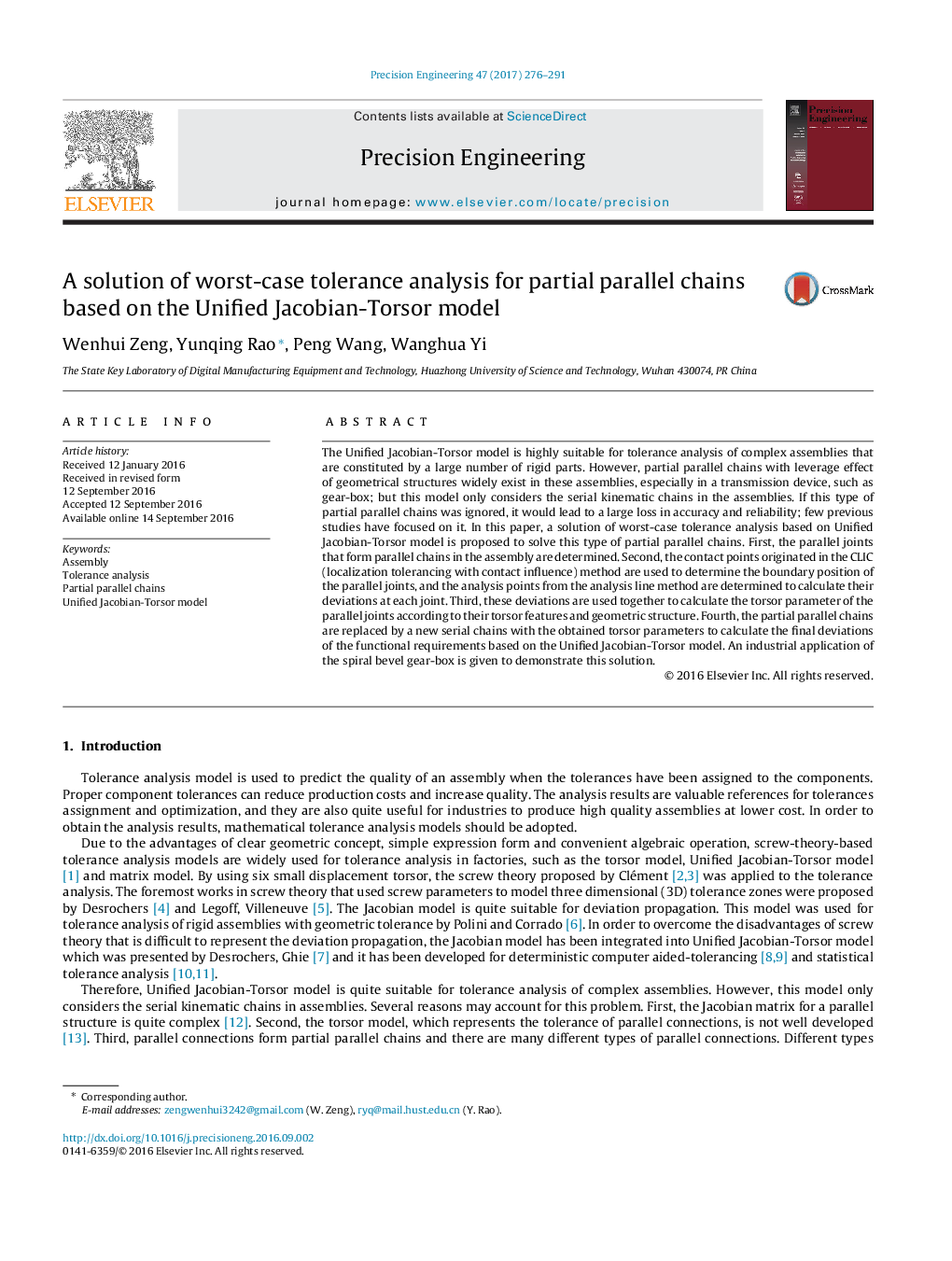| Article ID | Journal | Published Year | Pages | File Type |
|---|---|---|---|---|
| 5019197 | Precision Engineering | 2017 | 16 Pages |
â¢A solution of worst-case tolerance analysis to solve the partial parallel chains with the leverage effect of geometrical structures is proposed.â¢Deviations of parallel joints are calculated and regarded as a new torsor to replace the partial parallel connection.â¢Parallel chains are transformed to a new serial chains to calculate the functional requirement.
The Unified Jacobian-Torsor model is highly suitable for tolerance analysis of complex assemblies that are constituted by a large number of rigid parts. However, partial parallel chains with leverage effect of geometrical structures widely exist in these assemblies, especially in a transmission device, such as gear-box; but this model only considers the serial kinematic chains in the assemblies. If this type of partial parallel chains was ignored, it would lead to a large loss in accuracy and reliability; few previous studies have focused on it. In this paper, a solution of worst-case tolerance analysis based on Unified Jacobian-Torsor model is proposed to solve this type of partial parallel chains. First, the parallel joints that form parallel chains in the assembly are determined. Second, the contact points originated in the CLIC (localization tolerancing with contact influence) method are used to determine the boundary position of the parallel joints, and the analysis points from the analysis line method are determined to calculate their deviations at each joint. Third, these deviations are used together to calculate the torsor parameter of the parallel joints according to their torsor features and geometric structure. Fourth, the partial parallel chains are replaced by a new serial chains with the obtained torsor parameters to calculate the final deviations of the functional requirements based on the Unified Jacobian-Torsor model. An industrial application of the spiral bevel gear-box is given to demonstrate this solution.
